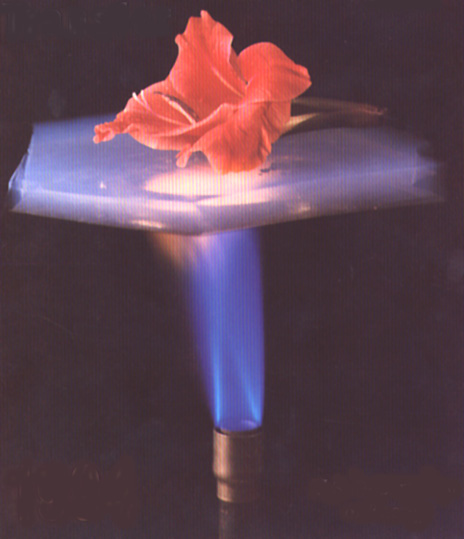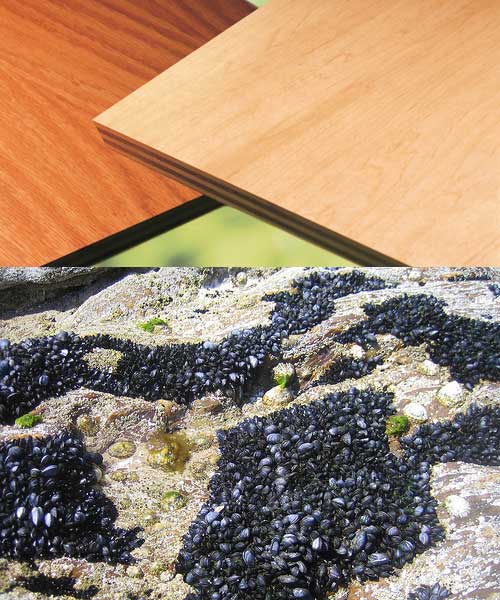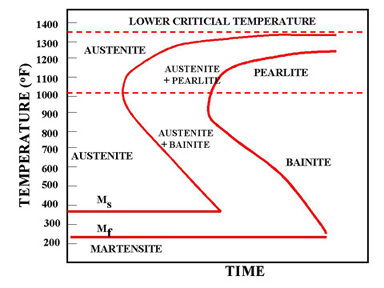Metamaterial
What are metamaterials? They are substances not found in nature and are created by embedding tiny implants in a material such that they force electromagnetic radiation or light to bend in unorthodox ways. The metamaterial created by the scientists at Duke University were composed of a mixture of ceramic, Teflon, fiber composites, and metal components.
 Invisible Cloak
Invisible Cloak
Some metamaterials have a negative refractive index, an optical property that may be used to create “superlenses” which resolve features smaller than the wavelength of light used to image them! This technology is called subwavelength imaging. Metamaterials would used in phased array optics, a technology that could render perfect holograms on a 2D display. These holograms would be so perfect that you could be standing 6 inches from the screen, looking into the “distance” with binoculars, and not even notice it’s a hologram.
Negative Refractive Index
The effect of the metamaterial is analogous to a fast moving stream with a boulder at its center. The flowing water is forced around the boulder to meet again on the other side. Downstream, there is no evidence that the boulder even exists. Similarly, metamaterial can bend light waves around an object making the object inside the metamaterial invisible.
The key to metamaterial is its ability to manipulate the refractive index of light
“Metamaterial” refers to any material that gains its properties from structure rather than composition. Metamaterials have been used to create microwave invisibility cloaks, 2D invisibility cloaks, and materials with other unusual optical properties. Mother-of-pearl gets its rainbow color from metamaterials of biological origin. Metamaterials (artificial materials) can exhibit electromagnetic characteristics unlike those of any conventional materials. Negative refraction and artificial magnetism are some examples of properties that can be obtained and controlled in these materials.
“Metamaterial” refers to any material that gains its properties from structure rather than composition
In general, metamaterials are supposed to have the characteristic length scale of constituting elements much smaller than the radiation wavelength. They therefore can in good approximation be considered as continuous media with some effective electrodynamic properties. The key to metamaterial is its ability to manipulate the refractive index of light. Refraction is the bending of light as it moves through a transparent medium. If you’ve ever put your hand in a pool of water, you may have noticed that your hand appeared to bend and distort. The position of your hand that you saw through the water was not, in fact, where your hand was. Similarly, the apparent position of a fish in a pond is shifted from its actual location, something a spear fisherman must learn to correct for if he is not to go hungry.
Metamaterials with negative refractive index
The reason the light refracts or bends is that the speed of light slows down when it enters a dense transparent medium. In a pure vacuum, like space, the speed of light remains constant. But light traveling through water, glass, or some other transparent medium must pass through trillions of atoms, which slows it down. The refractive index of a substance is the speed of light in a vacuum divided by the speed of light in the substance. Thus, since light slows down in any substance compared to its speed in a vacuum, the refractive index is always greater than 1.0. For example, the refractive index of of air is 1.03 and for glass, 1.5.
Metamaterials could be used to create invisible ships
Usually the refractive index of a substance is a constant. A beam of light entering a piece of glass is bent at a constant angle and then continues in a straight line. But imagine, for a minute, that you could control the refractive index at will, so that it could change at every point in the material.
The Magic Of Metamaterials Could Help Create A Warp Drive
You could theoretically cause the light to bend around an object inside the material, rendering the object invisible. To achieve this, however, the metamaterial must have a refractive index less than one, which conventional physics says is impossible. Yet though metamaterials seem preposterous, and were once thought impossible to construct, they have now been manufactured.
 Negative Refractive
Negative Refractive
One flaw in achieving total invisibility is that someone inside the cloak would not be able to see out without having his/her eyes become visible. In the world of Liam Michaels, that is exactly what I have done. You’ll note that anyone viewing Liam or anyone wearing the metamaterial suits is confronted by a pair of eyes staring back at them. Furthermore, although a true Harry Potteresque invisibility cloak is within the laws of physics, there are some formidable hurdles.
The problem is making structures incorporating metamaterials that bend light of a wide range of wavelengths in three dimensions. Current metamaterials bend light of a narrow set of wavelengths and in only a single dimension. There is considerable money being poured into developing this technology, most of it for military applications. Thus, in spite of the challenges, many physicists feel tha total invisibility technology will be available within the next two decades…unless, of course, you’re an angel with somewhat greater resources.
You might also like
| Futuristic Materials part 2 Aerogel Several really amazing things to... | Biomimetics (Biomimicry) Biomimetics (also known as biomimicry,... | The Nature Inspired Innovation part 2 If you've ever tried to pick... | Time-Temperature-Transformation (TTT ) Diagram T (Time) T(Temperature) T(Transformation)... |




 Alloy Suppliers
Alloy Suppliers
 Aluminum
Aluminum
 Aluminum Extrusions
Aluminum Extrusions
 Copper-Brass-Bronze
Copper-Brass-Bronze
 Nickel
Nickel
 Magnets
Magnets
 Stainless Steel
Stainless Steel
 Stainless Steel Tubing
Stainless Steel Tubing
 Steel Service Centers
Steel Service Centers
 Titanium
Titanium
 Tungsten
Tungsten
 Wire Rope
Wire Rope